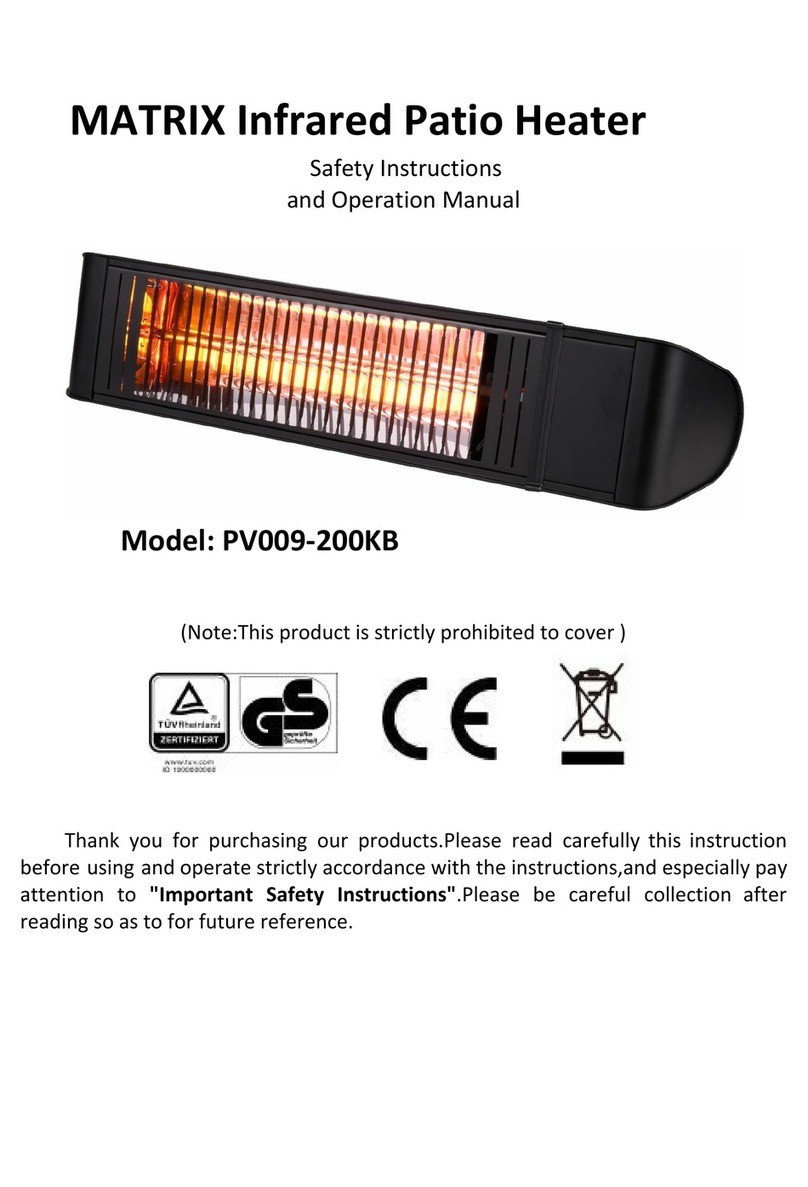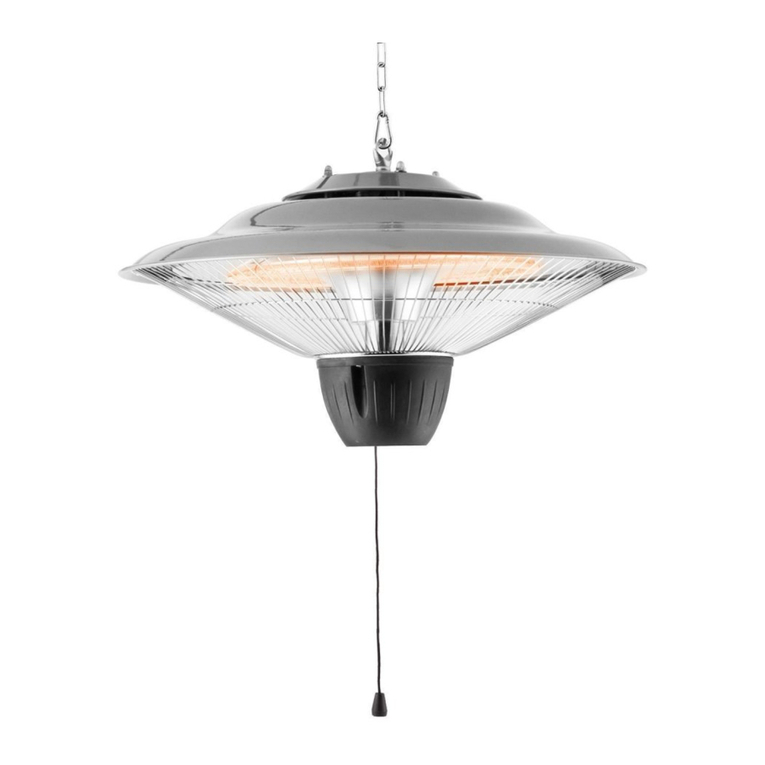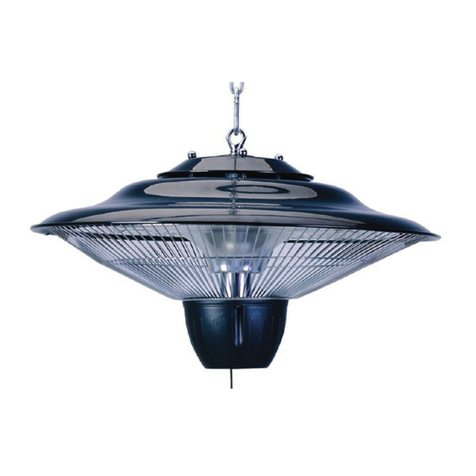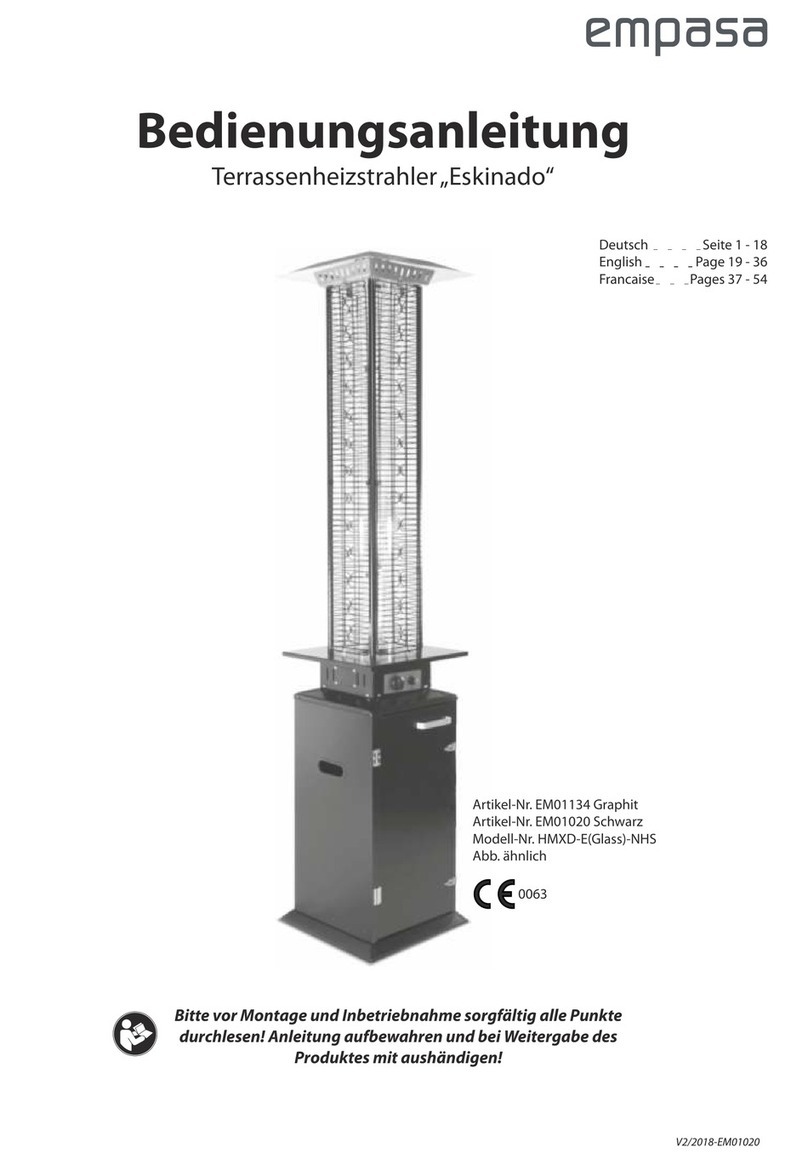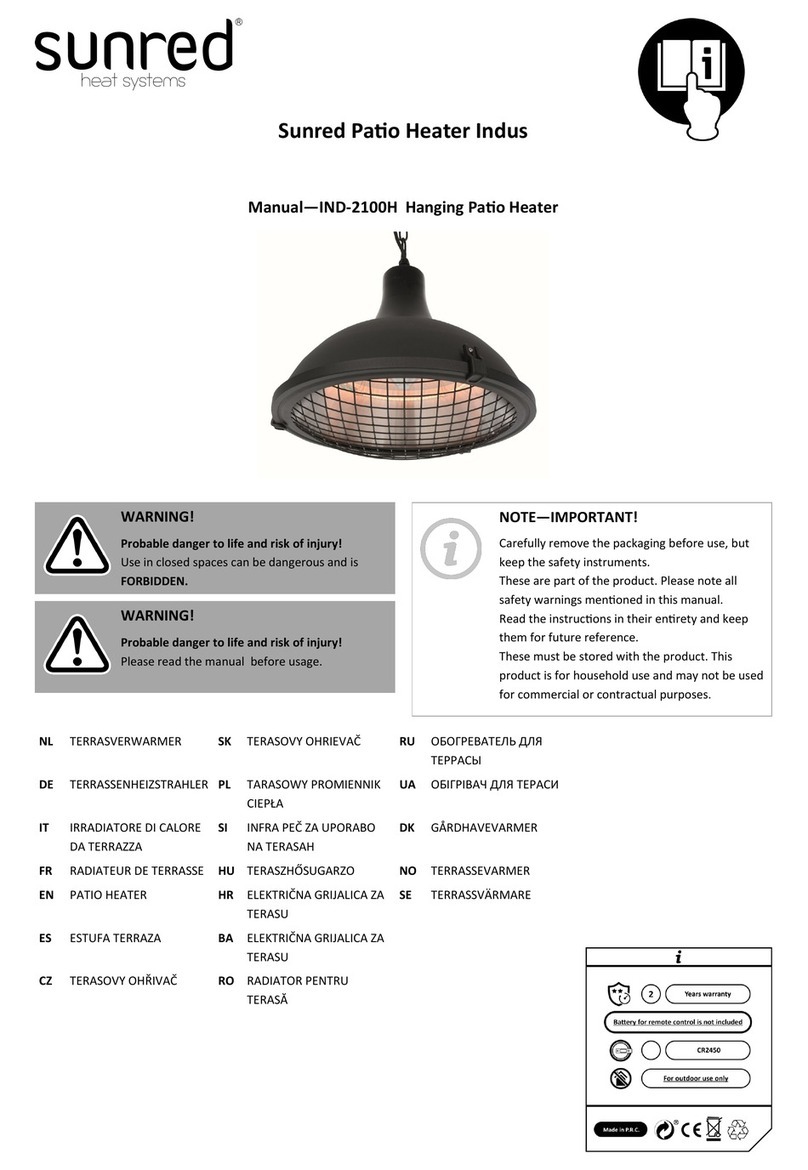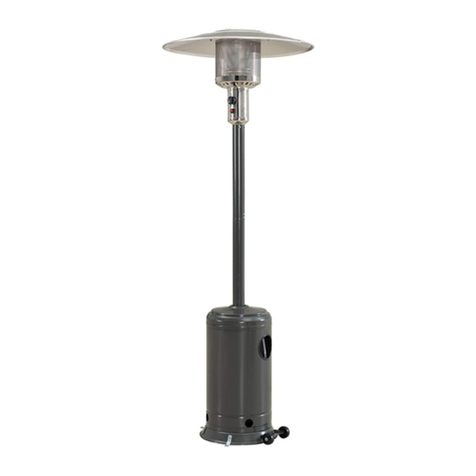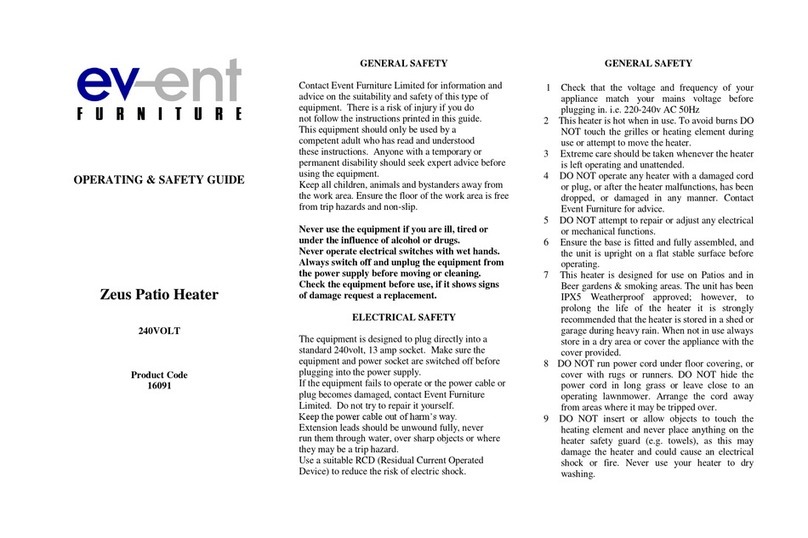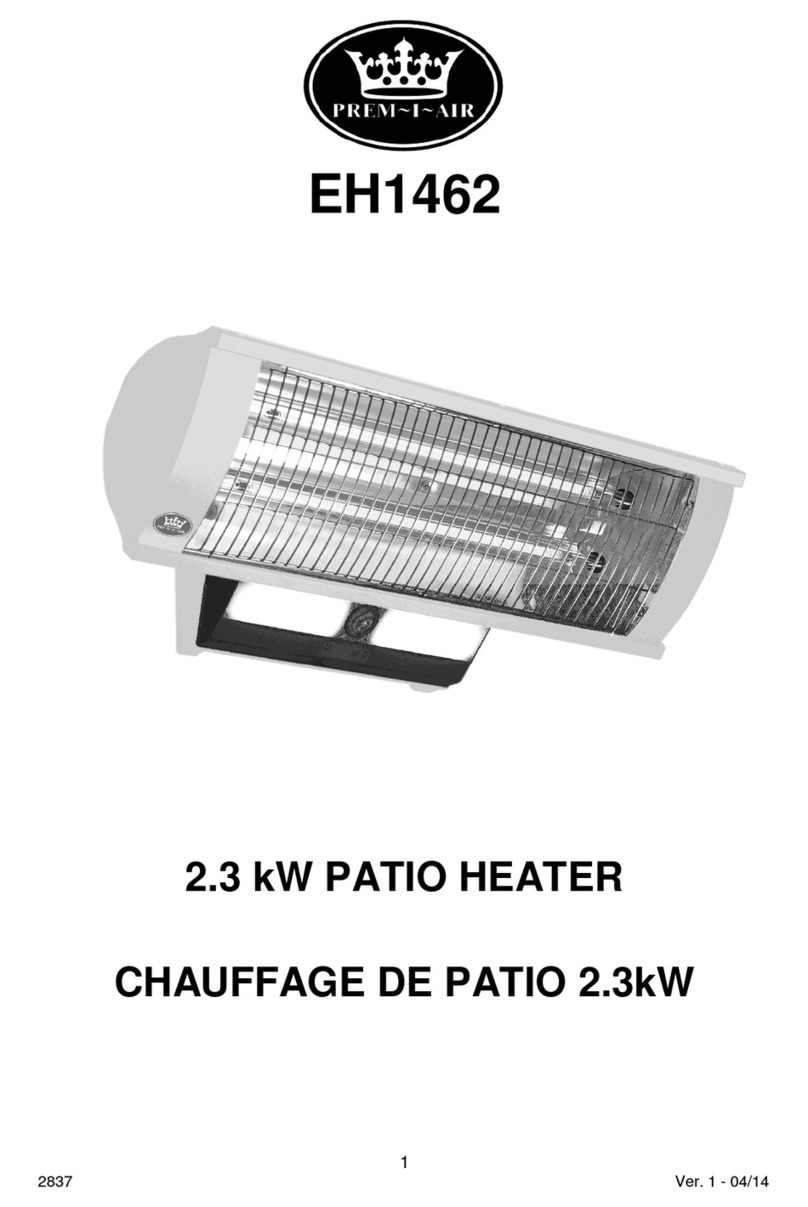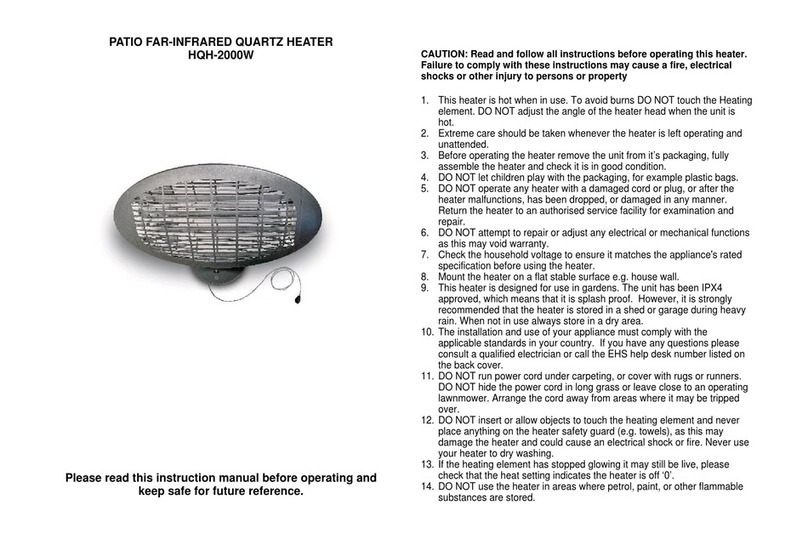
© 2021 by Snow Joe®, LLC
All rights reserved. Original instructions. SAVE THESE INSTRUCTIONS
1
A Division of Snow Joe®, LLC Model SJPPH48 Form No. SJ-SJPPH48-880E-M
R
OPERATOR’S MANUAL
OUTDOOR PROPANE HEATER
48000 BTU MAX | QUICK-START IGNITION
EN
IMPORTANT!
Safety Instructions
All Operators Must Read These
Instructions Before Use
Read all the instructions contained in this manual. Keep this
manual in a safe place, so that the information is available at
all times. If you give this patio heater to another person, make
sure to provide these operating instructions. Basic safety
precautions should always be followed when using the patio
heater.
Notice the personal safety alert symbol mused in this
manual to draw your attention to a WARNING given along
with the particular operating instruction. This means that
the operation requires special ATTENTION, CAUTION, and
AWARENESS.
INSTALLER: Leave this manual with the appliance.
CONSUMER: Retain this manual for future reference.
mFOR OUTDOOR USE ONLY
(outside any enclosure)
mDANGER! CARBON MONOXIDE HAZARD
This appliance can produce carbon monoxide which has no
odor. Using it in an enclosed space can kill you. Never use this
appliance in an enclosed space such as a camper, tent, car or
home.
mWARNING! Improper installation, adjustment,
alteration, service or maintenance can cause property
damage, injury or death. Read the installation, operating
and maintenance instructions thoroughly before installing or
servicing this equipment.
mDANGER! If you smell gas:
1. Shut o gas to the appliance.
2. Extinguish any open ame.
3. If odor continues, keep away from the appliance and
immediately call your gas supplier or re department.
mWARNING! If the information in this manual is
not followed exactly, a re or explosion may result causing
property damage, personal injury, or loss of life.
mWARNING! Do not store or use gasoline or other
ammable vapors and liquids in the vicinity of this or any other
appliance. An LP-cylinder not connected for use shall not be
stored in the vicinity of this or any other appliance.
mWARNING!
1. The installation must conform with local codes or, in the
absence of local codes, with the National Fuel Gas Code,
ANSI Z223.1/NFPA 54, NFPA58 Natural Gas and Propane
Installation Code, CSA B149.1, or Propane Storage and
Handling Code, B149.2
2. The heater, when installed, must be electrically grounded
in accordance with local codes or, in the absence of local
codes, with the National Electrical Code, ANSI/NFPA 70,
or the Canadian Electrical Code, CSA C22.1.
3. Prior to use, check if any part is damaged, such as hoses,
regulators, pilot or burner. If any of the parts are damaged,
do not use the heater. Please contact the Snow Joe®+
Sun Joe®customer service center at 1-866-SNOWJOE
(1-866-766-9563).
4. All leak tests should be done with a soapy solution.
NEVER USE AN OPEN FLAME TO CHECK FOR
LEAKAGE.
5. Children and adults should be alerted to the hazards of
high surface temperatures and should stay away to avoid
burns or clothing ignition.
6. Young children should be carefully supervised when they
are in the area of the heater.
7. Clothing or other ammable materials should not be hung
from the heater, or placed on or near the heater.
8. Any guard or other protective device removed for
servicing the heater must be replaced prior to operating
the heater.
9. Installation and repair should be done by a qualied
service person. The heater should be inspected before
use and at least annually by a qualied service person.
10. Frequently clean this appliance. It is imperative that
the control compartment, burners and circulating air
passageways of the heater be kept clean.
11. Keep the appliance area clear and free from combustible
materials, gasoline and other ammable vapors and
liquids.
12. Do not obstruct the ow of combustion and ventilation air.
13. Keep the ventilation opening(s) of the cylinder enclosure
free and clear from debris.


